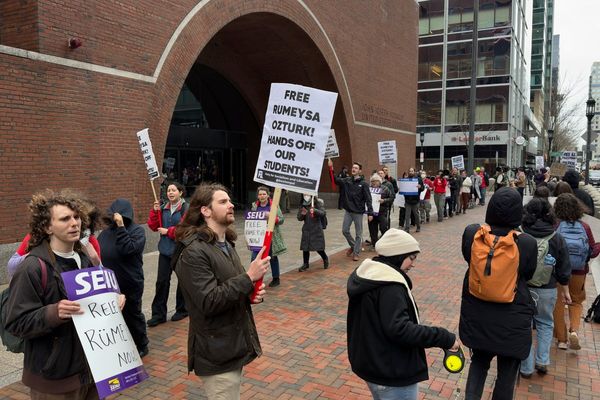
More than two out of every five American adults is obese, meaning that more of us are experiencing fat shaming to the extent that it's become a mainstream topic of public discourse. In just the past week, this public discussion has fixated on Darren Aronofsky's new film "The Whale," which some see as fat-phobic; and the public bullying of plus-sized supermodel Ashley Graham, who was shamed for being "fat" by former Miss New Jersey Sameera Khan. Of course, most fat-shaming in the United States does not happen in discussion forums that millions read, but rather in quotidian moments in everyday people's lives. And many may be surprised to know that it wasn't always this way: beauty standards — along with which body sizes are seen as attractive — are nebulous, and have changed frequently throughout history and culture. Rather, we are socialized to desire a specific size.
Opal Stacie is a wellness blogger and YouTuber who recalled to Salon that, although she struggled with her weight as a child, as a teenager she was regarded as thin and desirable. Instead of being ignored or rejected by the men that she liked, Stacie felt she had pretty privilege, a term for the social benefits that accrue to individuals widely regarded as physically attractive. She became, in her own words, "a party girl" — but when she gained more than 100 pounds after her pregnancy, her friends stopped inviting her out and men started ignoring her again.
While many cultures and individuals still preferred slender women and muscular men, others idealized being "plump as a partridge" as indicative of both health and wealth.
"My friends would go to exclusive parties in South Beach [Miami] clubs and, as a larger woman, it's a lot harder for those promoters to look past the fact that I'm 'the big girl,'" Stacie told Salon. "They don't want the big girl in the club. They want all the pretty skinny girls in the club."
That Stacie used the terms "pretty" and "skinny" separately is apt, as "skinny" has not always been a social prerequisite to being regarded as "pretty." Indeed, human cultural history is proof that our ideas of what constitutes beauty are ever-changing, and not tied to a specific weight. In other words, "pretty" is not hardwired into our DNA. Subjective social mores alone lead to "thinness" and "prettiness" being viewed as inextricably linked — and if that status quo ever changes, shifting social standards will be what changes it.
"If you look at beauty magazines, thin has been in for the last hundred years," explained Dr. Stefanie K. Johnson, Director of the Doerr Institute and Professor at Rice University, who specializes in studying unconscious biases. At least as far as America is concerned, Johnson pointed out that the current preference for slender physiques traces back to the 19th century, when magazines and other disseminators of popular opinions started popularizing muscular men and slender women to the public. Before the age of mass media, sexual preferences were as varied as the cultures that held them. While many cultures and individuals still preferred slender women and muscular men, others idealized being "plump as a partridge" as indicative of both health and wealth. People were more flexible overall about what was considered "attractive," both individually and collectively, because different body types lend themselves to different potentially favorable interpretations.
"I would say that the most 'in' thing is to look and be healthy, from a dating/evolutionary view," Johnson wrote to Salon. "This means that curvy women should be preferred because they have greater fertility. Likewise, thinner or muscular bodies suggest you have lower risk of disease." When people face stress, with a high risk of disease and low resources, they are inclined to prefer heavier people; by contrast, individuals with wealth and power may be more inclined to thinner bodies.
So why did mass media start imposing monolithic beauty standards on the public? While there was never any deliberate conspiracy specifically determined to hurt the self-esteem of obese men and women, it is undeniable that a small group of powerful people had distinctly conservative agendas for promoting that notion. In the 1840s, Presbyterian minister Sylvester Graham insisted that women who did not follow a plain and abstemious diet (which made them skinny) were immoral as well as unhealthy. In addition, with more and more people abandoning the countryside and moving to the city, sedentary lifestyles became common and, as a result, so did obesity. This made it easier for businesses and social critics to propagandize against fatness because, simply put, the existence of more fat people opened up potentially lucrative opportunities for doing so.
The Industrial Revolution played a major role. Because garment manufacturers created standardized clothing sizes in order to more efficiently sell their wares, men and women alike began defining their physical appearance by numbers created by other people. This, in turn, made it profitable for businesses to push certain looks as "right" and others as "wrong," with undergarments like corsets becoming increasingly popular so that women would forcibly move their fat around to achieve the "attractive" look.
"People who are pretty receive a long list of benefits – people think they are smarter, more conscientious, kinder."
If all of this sounds like human beings coming up with new ways to create "winners" and "losers" in a realm where such designations may not have otherwise existed, you would be correct.
"The thin ideal isn't new— look at Ancient Greece. Every culture throughout history has had rigid expectations about body size and beauty," explains Virginia Sole-Smith, author of the forthcoming book "Fat Talk: Parenting in the Age of Diet Culture" and writer of the Substack newsletter Burnt Toast.
Sole-Smith said that white supremacy has also joined more commercial incentives for imposing a "thin ideal" on Americans. "Beauty ideals are always tools for upholding social hierarchies, so they are defined by whomever has the most power and privilege to lose. But we can trace the modern American thin ideal back to white supremacy and the end of slavery; Sabrina Strings explores this in her ground-breaking work, "Fearing The Black Body." Idealizing thin, white bodies was a way to continue to other and discriminate against Black people."
While Americans may argue that the racist, sexist and crassly commercial imperatives that fueled the modern version of the "thin ideal" have diminished, the privileges embedded in those ideals remain very strong.
"People who are pretty receive a long list of benefits – people think they are smarter, more conscientious, kinder," Johnson told Salon. "They are hired more easily, receive higher starting salaries, more promotions. They are preferred in dating contexts and some evidence suggests they have happier marriages. The benefits tend to be stronger for men than women because pretty can carry a penalty for women."
While it may seem counterintuitive for there to be a "penalty" for being pretty, as Johnson emphasized, being a "pretty" woman can also have disadvantages. Her own research has demonstrated that point.
"In certain cases pretty women are seen as less competent or a worse fit for masculine jobs given their femininity," Johnson observed. "One study I did with a colleague showed pretty women are trusted less." Just as "pretty" women have an advantage of being noticed, they can also be targeted for hostility by people who feel insecure around them or assume they have negative personality traits like cruelty or promiscuity. Although Johnson's research suggests that women with pretty privilege tend to be aware that people are often nicer to them as a result of their attractiveness, they also encounter unflattering generalizations about their personality because of unfounded assumptions based on their looks.
Fortunately, body positivity movements are gradually chipping away at the assumptions that cause billions of people to hate their own physique.
"There is a lot more diversity in what is perceived as attractive now, thanks to more awareness about body positivity and inclusivity of all different body shapes," explains Dr. Nicole Avena, an assistant professor of neuroscience at Mount Sinai Medical School and a visiting professor of health psychology at Princeton University. "Also the waif-y, super skinny ideal that may have been popular in the 1980s and early 1990s has been replaced with a curvier ideal for women. As to whether or not there are data that actually support this, I think it is hard to say because the definition of pretty varies over time, cultures and individual's preferences."
"You can be the most physically ideal man or woman out there, but if you are a jerk and no one can stand you, then you aren't going to be viewed as 'pretty' for very long."
Avena also pointed out that — while the phrase "true beauty is on the inside" may just seem like a meaningful sop to help the feelings of so-called "ugly people" — evidence suggests that a great personality can indeed compensate for a supposedly unattractive physical appearance.
"I personally think phrases like this [pretty privilege] put an unnecessary emphasis on physical appearance being the only thing that makes people attractive," Avena wrote to Salon. "Personality, humor, values, etc all also play a role, and these are discounted when we focus purely on how someone looks. You can be the most physically ideal man or woman out there, but if you are a jerk and no one can stand you, then you aren't going to be viewed as 'pretty' for very long."
This observation is true, but it does not numb the sting of losing pretty privilege after gaining weight. Feminist health blogger Morgan May knows this firsthand as a 20-year-old when she stopped taking Adderall, developed a binge eating disorder and gained more than 40 pounds. Although she had previously been a "hot girl" according to "Eurocentric beauty standards," she lost that and still remembers the disappointed face of a boy who saw her post-weight gain after being attracted to her pre-weight gain.
"This was the first time this had ever happened to me and I was shocked and confused," May wrote "I had usually been the 'prize' men wanted to be with amongst other women, so this was mortifying and heartbreaking. I knew why it had happened, but because I had felt so out of control of my body, I blocked it out and moved on, not knowing what to do about it." May says she was eventually able to shed her excess weight. Looking back, she has advice for people who fear they have lost pretty privilege — never give up on striving to be the best possible version of yourself.
"I don't believe in ever submitting to our own victimhood and I think a large part of why I've successfully un-f**ked myself in various ways is because I will never ever give up the fight for my life and my goals, even if it takes years," May observed. "I don't believe other people should change their preferences to make me feel more comfortable and I don't believe in redefining standards of beauty. I think if you have a problem in your life, you should fight tooth and nail — a plethora of approaches be they coaches, hypnotherapists, nutritionists, etc. to achieve the most powerful version of yourself possible, period."
Opal Stacie, by contrast, witnessed firsthand how young children are socialized to believe that fatness and unattractiveness are synonymous.
"I just recently told my son who's like five years old that pretty is not synonymous with fat, because he's going through a little stage where he's doing name-calling and he started telling me that I'm fat and ugly," Stacie told Salon. "I said 'Being fat is not synonymous with being ugly. You can call me fat if you want to, but you can't call me ugly.'"







